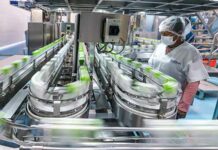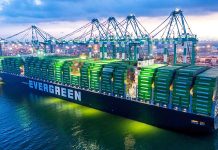
The Belfer Center at Harvard University’s Kennedy School released a paper in December titled “The Great Tech Rivalry: China vs the US”, analysing the technological status of the two giant economies.
Harvard professor Graham Allison, lead author of the report, and Eric Schmidt, the former Google CEO, also published an op-ed in The Wall Street Journal on the subject. They contend that China has already surpassed the US in areas like artificial intelligence, 5G, quantum information science, semiconductors, biotechnology and green energy.
The study identified China’s “whole-of-society” approach as the differentiator. But how does this accelerate China’s technological development? The US needs a comprehensive understanding of what has driven China’s innovation abilities in general, so policymakers can develop a more strategic response.
China’s five-year plans lay out the country’s priorities and responses to both domestic and external changes. While US policymakers have long scoffed at China’s top-down planning system, these directives have generally delivered good outcomes, particularly in the past couple of decades.
The recent US sanctions on a range of technology, such as high-end semiconductor chips, have triggered faster domestic development in China. Many in the world expect China to catch up with the West, Taiwan and Korea in high-end chips in the not-so-distant future.
Along the way, the Chinese government has released a report on the digital economy, covering the development of digital infrastructure (especially for big data) and key technologies, and the digital transformation of traditional industries and public services, over the next five years.
While China pursues top-down planning policies, it also nurtures dynamic private-sector enterprises along with state-owned enterprises, creating a unique, dual economic structure.
SOEs provide public goods, often going beyond the narrow definition of economic returns to fulfil their social responsibilities. These public goods and infrastructure in turn support all types of enterprises, foreign and domestic, creating a better ecosystem for businesses in China.
In addition, local governments function as a link between the central government and private enterprises, channelling resources according to Beijing’s priorities while supporting businesses through funding, the incubation of start-ups and public-private partnerships. This layered approach ensures the nation’s resources are used to meet the most critical objectives, providing cohesion and resilience.
China is an ancient civilisation that has developed, fine-tuned and learned from a wide range of philosophies over time. This inclusive nature, coupled with absorption of Western political ideas such as capitalism and Marxism, serves as the backbone to China’s modern thinking.
At the centennial anniversary of the Communist Party of China, President Xi Jinping repeatedly emphasised the theme “To learn from history and build a better future”. As China searches for its modernity with Chinese characteristics, this mindset is manifesting itself in everything it does.
Western multinational corporations operating in China understand this approach much better than politicians. Doug Guthrie, formerly of Apple University, recently underscored why being in China was so critical for the success of Apple.
Apple and Chinese partners co-created the intellectual property needed for Apple products, leading to a win-win situation. Apple has since become the world’s first business to be valued at over US$3 trillion.
Today Tesla is the top-selling electric car brand in China and half of Tesla’s global deliveries are from Tesla’s Shanghai plant.
Similarly, US semiconductor company Nvidia benefited immensely from the massive demand for automotive chips in China, the world’s largest automotive market.
Ali Kani, Nvidia’s vice-president, stressed the importance of China’s dynamic electric vehicles sector to the company’s efforts to expand its global automotive business, which has projected revenues of US$8 billion over the next six years.
Many US tech companies have benefited from being part of the Chinese economy and understand the effectiveness of the Chinese approach to governance. These companies share one thing in common: they see working with China as a win-win for both sides.
The same applies at a national level. While the Harvard Belfer study calls the US-China relationship in technology a “rivalry”, perhaps a more constructive way to think about it would be to compete where necessary but collaborate where appropriate.
After all, technology can improve human lives; it should be the intrinsic responsibility of the big powers to advance that cause for the benefit of humanity.
Edward Tse is founder and CEO of Gao Feng Advisory Company, a strategy and management consulting firm with roots in Greater China
Fuente:
Edward Tse-https://www.scmp.com/comment/opinion/article/3164758/apple-and-teslas-success-china-shows-sino-us-cooperation-can-be-win?utm_source=cm&utm_medium=txn&utm_campaign=enlz-NOT-Follow&utm_content=20220128&d=01011a9a-399a-4710-abaf-0f83b00c062d



